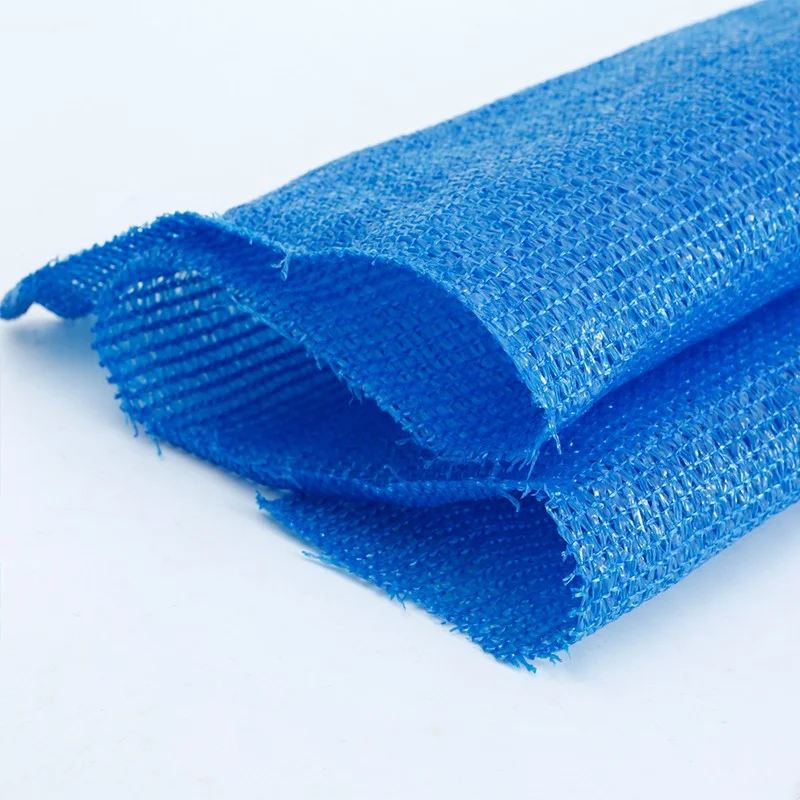- This topic is empty.
-
AuthorPosts
-
31/07/2025 at 17:48 #5841
Sun shade nets are essential in agriculture, construction, and commercial applications, offering protection against intense sunlight and UV radiation. Among various types, the strong blue sun shade net stands out for its high tensile strength, durability, and eye-catching color. In this blog post, CANA will share the manufacturing process of strong blue sun shade net for sale, from raw material selection to quality control, with an emphasis on technical precision and product performance.
Strong Blue Sun Shade Net Manufacturing Process
1. Selection of Raw Materials
The manufacturing journey begins with the careful selection of high-quality raw materials. The most commonly used polymer is high-density polyethylene (HDPE), chosen for its durability, UV resistance, and lightweight characteristics.
To enhance the net' s strength and longevity, the following additives are incorporated:
* UV stabilizers: Improve resistance to ultraviolet degradation
* Color masterbatches: Ensure uniform and vibrant blue pigmentation
* Antioxidants: Extend the product' s operational life under prolonged sun exposure
The blend of these materials ensures the net achieves the necessary balance of flexibility, strength, and weather resistance.
2. Extrusion of Monofilaments or Tapes
Once the polymer and additives are mixed and melted in an extruder, the molten compound is shaped into two main forms:
* Monofilaments: Thin, round strands
* Flat tapes: Wider, flatter strips
For a strong blue sun shade net, flat tapes are typically preferred due to their higher coverage and enhanced tensile properties. These tapes pass through a cooling tank to solidify, then move on to a stretching unit.
The stretching process is critical—it aligns the polymer molecules, significantly boosting the tape' s tensile strength and flexibility. The final thickness and width of the tapes are carefully monitored to meet precise specifications.
3. Warping and Weft Preparation
After extrusion, the tapes are wound onto bobbins and prepared for weaving. In this stage:
* Warp threads (longitudinal) are set on warp beams.
* Weft threads (transverse) are prepared in spools.
Tension is carefully adjusted to ensure smooth weaving operations and to prevent breakage during the high-speed process.
4. Weaving on Raschel or Sulzer Looms
Weaving is the central stage of shade net production. Raschel looms are most commonly used for producing shade nets, as they can create strong and flexible knitted meshes.
The tapes are knitted into a mesh structure based on the desired shade percentage, which generally ranges from 30% to 95%. For strong blue sun shade nets, the pattern is tightly knitted to provide high shading performance and mechanical strength.
Key performance characteristics controlled during weaving include:
* Mesh size
* Knot type
* Tension uniformity
* Width and roll length
Advanced looms are equipped with automated control systems that monitor consistency, detect defects, and adjust operational parameters in real time.

5. Thermal Stabilization and Heat Setting
Post-weaving, the net undergoes heat setting to stabilize the structure and lock in the dimensions. The material passes through heated rollers or an oven system where controlled heat is applied.
Benefits of this process include:
* Improved dimensional stability
* Reduced shrinkage
* Enhanced shape retention under stress
This stage also contributes to the tactile feel of the net, making it smoother and easier to handle during installation.
6. Edge Reinforcement and Cutting
To improve durability during installation and use, edge reinforcement is often added. This may involve:
* Thicker selvedges
* Sewn or thermally bonded hems
* Insertion of reinforcement tapes
Cutting is performed with precision machinery that can produce standard roll sizes or custom dimensions. Typical roll widths range from 1 meter to 6 meters, and lengths vary according to application needs.
7. Quality Inspection and Testing
Each batch of strong blue sun shade net undergoes a rigorous quality assurance process, including:
* Tensile strength testing: To ensure mechanical durability
* UV resistance testing: To verify long-term outdoor stability
* Color fastness testing: To assess the persistence of the blue pigment under sunlight
* Mesh uniformity checks: Using digital imaging or optical sensors
Any product not meeting specifications is either reprocessed or discarded.
8. Packaging and Labeling
After inspection, the nets are tightly rolled and wrapped in UV-protective polyethylene film to prevent damage during transportation and storage. Labels include:
* Shade percentage
* Material specifications
* Manufacturer information
* Batch number for traceability
Some manufacturers also offer OEM branding or custom labels for distributors.
Conclusion
The manufacturing process of strong blue sun shade net involves a sophisticated series of steps, from polymer extrusion and precise weaving to thermal setting and final inspection. Each stage contributes to creating a durable, efficient, and visually appealing product suitable for a wide range of outdoor applications. As environmental challenges mount, the role of advanced shade net technologies in agriculture, construction, and public spaces continues to expand—making quality manufacturing more important than ever.
-
AuthorPosts
- You must be logged in to reply to this topic.